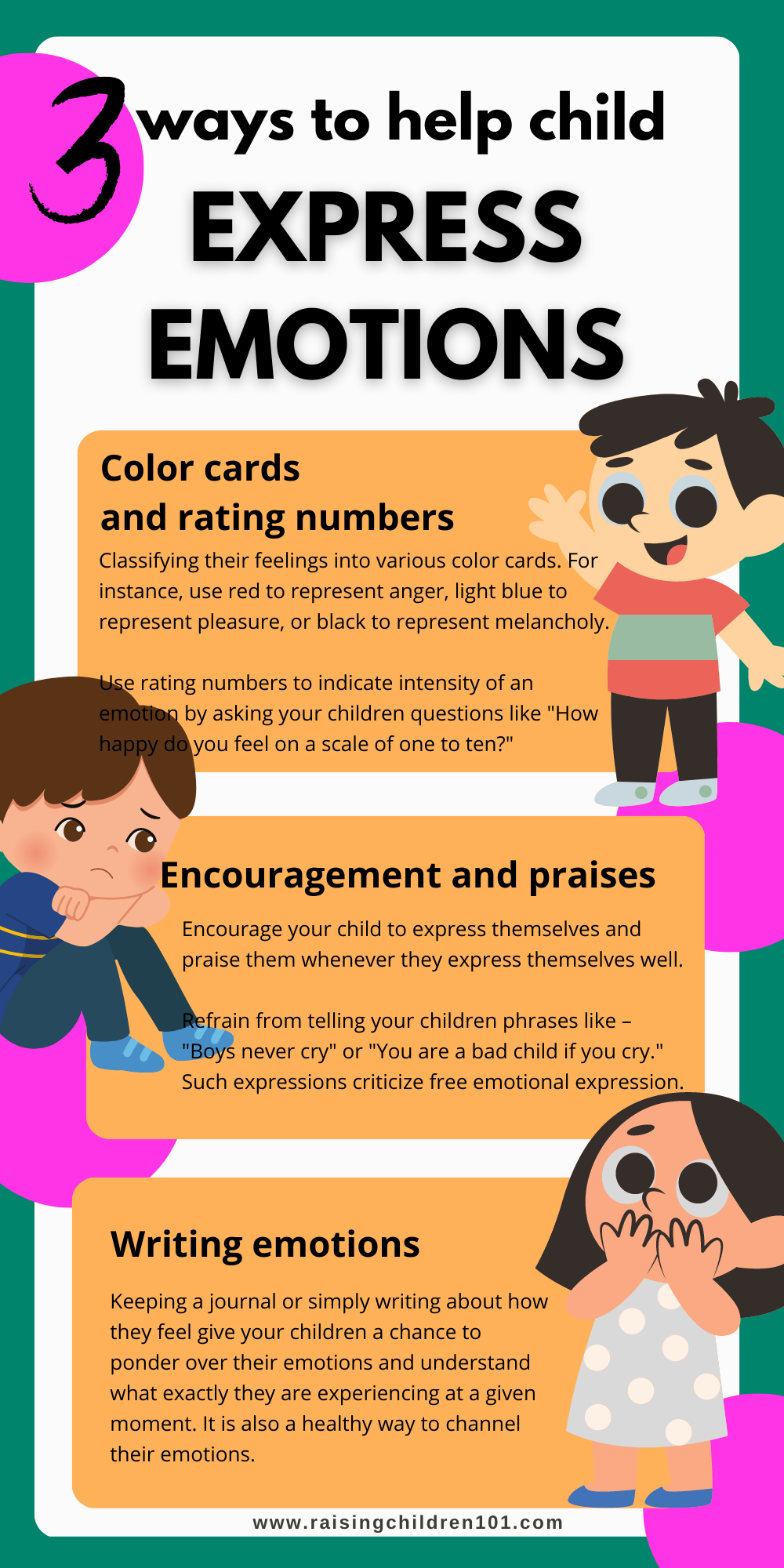Sneha feels elated to top her exams but the news of her best friend not performing well makes her feel guilty and sad. She comes home with a conflicted expression and even feels angry at her friend. “If he too had scored better, then we both would have celebrated. Now, I cannot express my happiness because my best friend is sad” – this thought keeps pestering her and she spends all her day looking gloomy even when her parents show their joy over her achievement. She is unsure of what to feel and how to express herself.
Why it is important to help child express emotions?
P T Young describes emotion as “an acute disturbance of the individual as a whole, psychological in origin, involving behavior, conscious experience and visceral functioning.”
Robert Plutchik’ wheel of emotions proposes eight primary emotions (anger vs. fear, happiness vs. sadness, trust vs. disgust, and surprise vs. anticipation) concluding that different combination of these basic emotions gives rise to a myriad of emotions.
This is where things get tricky for kids as deciphering the emotions and expressing oneself become difficult.
Studies shows that positive emotion recognition in children is linked to self-concept for intellectual status and a positive correlation between emotions, self-esteem, and motivation. Thus, positive emotional development and expression are important in child development.
Youngsters like Sneha struggle to express themselves for different reasons – lack of interest on their parents’ part, their own shy countenance, failing to understand their emotions, guilt over feeling joy if others are unhappy, etc. So, advocate a healthy environment where expression of emotions is encouraged and help child express emotions.
When helping your child express emotions, consider factors like their child’s disposition, comfort, gender, etc. For instance, studies show that males are more prone to anger than females. So, as parents, you need to find more healthy ways for your boys to express anger.
We can say not all methods work on all kids, but here are a few that can be equally applied.
3 ways to help child express emotions
1. Color cards and rating numbers
Using various colored cards to express and communicate is one of the most successful methods psychologists employ with autistic persons since they frequently struggle with communication. Now, we are not claiming your youngster has a problem; rather, by classifying their feelings into various color cards, they may communicate themselves more readily.
To assist your child describe their feelings, use colors in a similar way. For instance, use red to represent anger, light blue to represent pleasure, or black to represent melancholy. If your youngster chooses a certain color to represent each feeling, it would be more effective.
Meier, et al. (2004) explored the relationship between emotional words and colors, concluding that brightness is often associated with positive emotions, while darkness with negative emotions. Similarly, rating numbers to indicate an emotion or its intensity by asking your children questions like “How happy do you feel on a scale of one to ten?” or “You look sad today. How would you rate your mood on a ten-point scale?” helps your child to express effortlessly.
2. Encouragement and praises
Encourage your child to express themselves and praise them whenever they express themselves well.
Refrain from telling your children phrases like – “Boys never cry” or “You are a bad child if you cry.” Such expressions directly criticize free emotional expression. You need to create an environment where emotional expression is promoted.
Be the role model for for your child. Study by Zhou, et al. (2002) shows that parental modeling of positive emotions leads to increase in empathy and social competence of kids. Conversely, parental modeling of negative, anxious emotions predicts anxious responses in children (Borelli, et al., 2015). Thus, parental expression of emotion in a positive way is important for children to learn the same. So, you should express more positive emotions for better emotional development of their children.
3. Writing emotions
Writing is a perfect outlet to declutter all thoughts and feelings. Keeping a journal or simply writing about how they feel give your children a chance to ponder over their emotions and understand what exactly they are experiencing at a given moment. It is also a healthy way to channel their emotions. To take an example, if your child feels angry then rather than breaking things or shouting, writing can help your child let go of all the pent-up anger. In short, writing can be cathartic.
A study Kirk, et al. (2011) by suggest that emotional intelligence increases when emotions are expressed through writing. As a result, children are able to better perceive emotions and express themselves.
Finding new words to express the exact emotion also helps. For instance, if your child seems happy you can ask them to express their emotion by choosing a word that most appropriately describes their emotional state. For happiness, they can choose – elated, exhilarated, bliss, or satisfaction based on the degree of the emotion.
Takeaway: Help child express emotions
The above discussion clearly establishes how important it is for children to express emotions as suppression of emotions lead to mental distress, fractured emotional development and possible psychological problems like low self-esteem, poor academic performance, substance abuse, etc.
Study by Morris, et al. (2002) reported that mothers (more than fathers) are involved more in emotional expression with children. So, mothers should be more active when it comes to teaching children the art of emotional expression. However, fathers still need to take initiative. Both parents should create a healthy environment where emotional expression is promoted.
Summary: Help child express emotions





